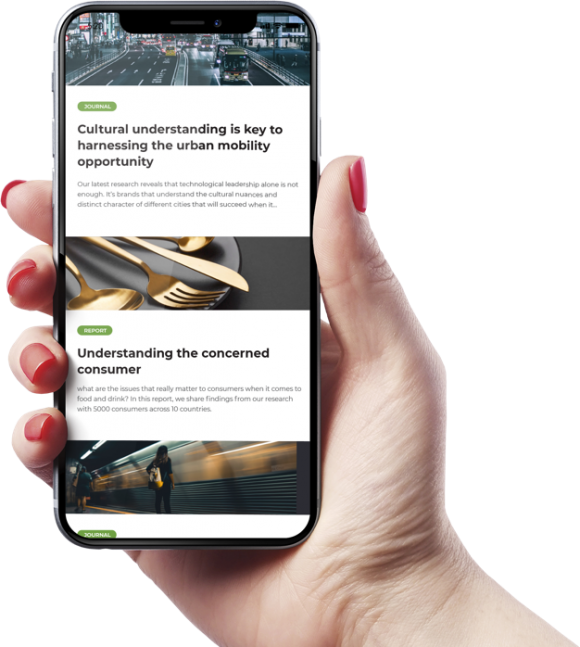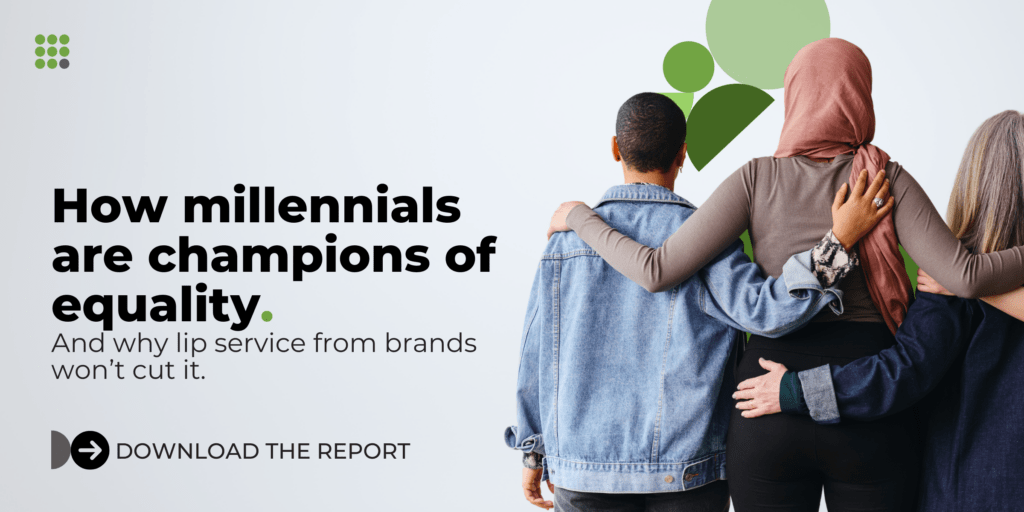I live in Tornado Alley, which means a roof isn’t just a roof – it’s armor. So when I found out mine needed replacing, I didn’t hesitate. I reviewed quotes, selected a company, signed the contract. All the hard stuff, I thought, was behind me.
Then came the question: what color?
It felt like it should’ve been easy. But standing in my driveway, staring up at the expanse of shingles-to-be, I froze. It’s a massive, permanent decision – visible from every angle, exposed to the sky, the neighbors, and every passing storm chaser. Would black make the house too hot? Would brown make it look dated? Would grey clash with the brick?
Naturally, I turned to ChatGPT. I uploaded a photo of my home, asked for help, and was met with an avalanche of color-coded logic – slate complements red brick, brown warms the palette, weathered wood is a “classic choice.” The suggestions were smart, thoughtful… and somehow made things worse. I now had more choices, just better argued.
So I went to the manufacturer’s website and used their simulation tool, dropping different shingle colors onto a photo of my house. It helped, in theory. But once I narrowed it down to three, they all started to blur. On screen, they looked practically the same. That’s when my roofing company stepped in. They brought physical samples, laid them out in the sunlight, and – most importantly – showed me actual homes nearby with each of the colors installed. Only then, after all the tech, the swatches, and the analysis, could I make a choice I felt confident in.
This wasn’t indecision. It was decision friction. And it’s the kind of friction that brands, in their pursuit of offering more, often overlook.
The Psychology of Too Much Choice
We tend to think more choice equals more freedom. But in reality, more choice often creates more anxiety. Psychologist Barry Schwartz coined this dynamic the Paradox of Choice – the idea that while some choice is good, too much can lead to decision paralysis, increased regret, and less satisfaction overall.
This is especially true when the decision feels high-stakes. Choosing a roof color isn’t just cosmetic – it’s a long-term investment, highly visible, and not easily reversed. When the pressure is on, our brain doesn’t appreciate abundance. It defaults to avoidance.
In one of the most cited studies in consumer psychology, Sheena Iyengar and Mark Lepper set up a jam sampling table in a grocery store. Shoppers were either offered six flavors or twenty-four. The larger display drew more interest – but those offered just six choices were ten times more likely to make a purchase. The takeaway? More options may attract attention, but fewer options drive action.
What’s happening under the surface is cognitive overload. Our working memory – responsible for weighing pros and cons – gets saturated quickly. With each new variable, our mental model has to recalculate. At a certain point, the decision becomes so mentally taxing that it feels easier to defer it, abandon it, or outsource it entirely. That’s not a lack of willpower. That’s the brain protecting itself from burnout.
When brands ignore this psychological friction, they unknowingly increase the likelihood of customer hesitation, second-guessing, or worse – inaction. Because when everything looks like a good option, nothing feels like the right one.
Why Some Decisions Deserve More Support
Marketers often treat decisions like they exist on a flat playing field. But in reality, choice sits on a hierarchy – and the higher up you go, the more psychological support people need.
Low-stakes decisions, such as choosing a gum flavor or a side dish, rarely cause friction. They’re inexpensive, reversible, and carry minimal consequences. High-stakes choices, on the other hand, are more complex, costly, and deeply personal. Whether it’s selecting a mortgage provider, a wedding dress, or a new roof, the risk of regret weighs heavier.
That’s when the brain switches gears. We move from intuition to analysis, and if overloaded, to avoidance. Behavioral economists refer to this as the decision fatigue curve. As the number of variables and the stakes increase, so does cognitive load. That’s why people delay home renovations or abandon full carts at checkout. It isn’t laziness – it’s self-preservation.
This is where tiered choice architecture can help. Instead of dumping every possibility on the table, brands can scaffold decisions. For example, a meal kit service might start by asking about dietary needs, then cooking skill, then taste preferences – delivering a filtered set of meals instead of all 200 at once. The consumer still feels in control, but the decision feels digestible.
Think of it like an elevator. Not every customer is heading to the top floor. Some want a shortcut to level two, others want to explore every stop. But without floors, stairs, or signage, everyone just stands around in the lobby – unsure of where to go next.
Smart brands design choice structures based on where decisions fall in the hierarchy and how much friction they carry. It’s not a nice-to-have – it’s essential.
Why Smart Tools Sometimes Backfire
Even when tools are meant to help, they can still make it worse. AI-generated recommendations, product filters, simulations – these were designed to ease decision-making. But when they simply layer on new variables without eliminating others, they amplify the problem.
In my case, ChatGPT gave me additional, well-reasoned color suggestions. The roofing brand’s simulator let me “see” each option on my house. But with every added perspective, I became more uncertain – not less. What I needed wasn’t more input. I needed a system that filtered, narrowed, and helped me move forward confidently.
That’s the trap brands fall into. They assume the answer to choice anxiety is better information. But the real solution is constraint.
People don’t want endless options. They want a sense that they’re on the right path. And while visual tools are helpful, they rarely match the nuance of real-world conditions – light changes, neighborhood aesthetics, material textures. That’s why physical samples and in-person examples were what ultimately helped me decide. Not because they offered more data, but because they reduced ambiguity.
Even the smartest tools can fail if they don’t acknowledge the emotional weight of uncertainty. Help should feel like progress, not pressure.
The Business Case for Simplifying Choice
It’s one thing to talk about the theory of too much choice. It’s another to see what happens when companies actually do something about it.
Procter & Gamble once sold 26 different versions of Head & Shoulders shampoo. From dandruff control to citrus burst, there was something for every scalp scenario. But instead of boosting sales, the abundance of options led to customer hesitation – and stagnant shelves. When P&G reduced the number of variants from 26 to 15, something surprising happened: sales went up.
Why? Because fewer choices didn’t mean less relevance. It meant less confusion.
This pattern repeats across industries. GAP, for example, simplified its denim wall – once packed with indistinguishable fits – and saw shoppers choose faster and with more certainty. In tech, Apple’s limited product lines stand in stark contrast to Android’s sprawling menus. Apple doesn’t overwhelm with options. It offers what’s needed – and nothing more.
Even in the world of digital entertainment, Netflix has tested ways to surface fewer titles on screen to reduce decision paralysis and increase view time. Endless scroll may seem like engagement, but often it’s just a user trapped in the loop of not knowing what to pick.
These companies realized that offering fewer, better-differentiated choices creates momentum. It respects the consumer’s time, reduces cognitive strain, and makes the path to “yes” feel like a confident step – not a leap of faith.
In a world that equates abundance with value, restraint has become a competitive advantage.
What Brands Should Learn
When consumers are overwhelmed, they don’t want more options – they want clarity. The role of the brand is no longer just to offer a catalogue of possibilities, but to actively guide people through a decision journey that feels considered, contextual, and reassuring.
Start with curated collections. Rather than overwhelming customers with endless variants, group products into purposeful sets: “best for small spaces,” “most popular among professionals,” “ideal for warm climates.” Curation is not restriction – it’s a form of empathy.
Next, invest in personalized guidance. This could be as simple as a quiz that identifies key needs and filters options, or as advanced as AI-driven suggestions based on behavioral patterns. But the goal is the same: to remove irrelevant options, not add to the noise.
Then there’s context. Il Makiage, for example, doesn’t just match foundation shades – they show how those shades look on real people, under real conditions. They reinforce your selection with testimonials and visual proof, not just swatches on a screen.
Brands should also think about post-purchase validation. The moment after a decision is made is just as critical as the moment before. Thoughtful follow-up emails, affirming language, tips for first-time use – these reassure the customer they made a smart call.
Ultimately, this is about choice architecture. The brands that win don’t just give people more to choose from. They design the experience around how people actually make choices – emotionally, socially, and cognitively.
The Role of Research in Reducing Friction
Understanding decision friction isn’t guesswork – it’s measurable. According to a Baymard Institute study, nearly 70% of online shopping carts are abandoned – and one of the top reasons is a complicated decision process. This is where market research proves invaluable.
At its core, decision friction stems from uncertainty. But the source of that uncertainty – whether it’s lack of clarity, hesitation, or unspoken objections – differs by category, audience, and context. Research identifies these hidden blocks.
Qualitative studies reveal how consumers feel in the moment of indecision. Quantitative methods like conjoint analysis or maxdiff help identify which features drive real value. Segmentation shows how different customer types make decisions – some need freedom, others need a path.
Research also plays a critical role in post-choice validation – what gives people confidence after they say yes. The right message, email, or proof point can turn relief into brand trust.
If friction is the obstacle, research is the flashlight.
UX Doesn’t Stand for Unlimited Experience
In digital environments, more space doesn’t automatically mean more freedom. It often means more friction. In user experience (UX) design, subtraction – not expansion – is often the most powerful conversion tool.
Booking.com once overloaded its interface with filters, price badges, and urgency cues. But A/B testing revealed that simplifying the layout led to higher engagement. Shopify restructured its onboarding to guide users through sequential tasks rather than overwhelming dashboards. Completion rates rose.
Even streaming platforms like Disney+ and Netflix have learned to surface fewer but more relevant titles. Endless choice wasn’t delight – it was paralysis.
This is called cognitive offloading – helping users conserve mental energy by removing unnecessary decisions.
UX design, at its best, doesn’t just look good. It helps people move forward.
Final Thought
Decision-making is rarely logical alone. It’s emotional, contextual, and deeply personal – particularly when the stakes are high. Smart brands don’t just sell products. They design experiences that acknowledge the mental load customers carry.
The best marketing today isn’t louder. It’s sharper. It removes friction not by simplifying what you offer, but by anticipating how people choose. If you’re not thinking about how your customer feels at the point of decision, you’re not really in the business of persuasion.
You’re in the business of hoping.
And hope is not a strategy.




